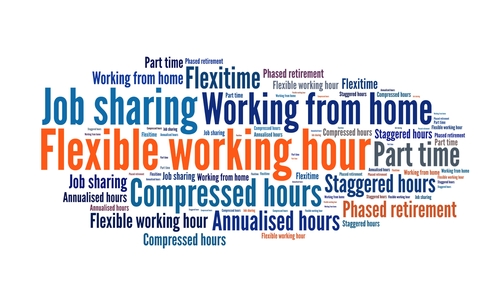We all know the cost of employee turnover is high. It only gets higher as the unemployment rate drops since it can take longer to fill a vacant role—thus increasing the time to regain productivity. Keeping good employees onboard is key to an organization’s success—but how can an employer increase employee satisfaction and thus increase retention rates?
 |
One answer might be to introduce flexible scheduling options. While there are many different components to employee satisfaction, work-life balance is a big one. At its heart, flexible schedule options seek to improve work-life balance equations for employees.
Here are some of the primary reasons flexible scheduling can improve work-life balance, improve employee satisfaction, and thus, reduce employee turnover:
Beyond reduced turnover, employers can see other benefits as well. A flexible schedule can actually increase employee accountability and productivity since employees with increased flexibility are more likely to be measured on outcomes. (They also have incentive to prove that the schedule works and will not harm the employer.)
What Types of Flexible Scheduling Do Employers Implement?
The term “flexible scheduling” means different things to different people. In fact, it could be interpreted to mean any of the following types of employee schedules, or even a combination of several of these options:
Naturally, not all of these will work for every employer or every role. But for employers that find they can implement some form of flexible scheduling, they may see the benefits in employee satisfaction, productivity, and retention—and thus, the benefits to their bottom line.
About Bridget Miller:
Bridget Miller is a business consultant with a specialized MBA in International Economics and Management, which provides a unique perspective on business challenges. She’s been working in the corporate world for over 15 years, with experience across multiple diverse departments including HR, sales, marketing, IT, commercial development, and training.
Flexible Scheduling: The Key to Employee Satisfaction?

1 thought on “Flexible Scheduling: The Key to Employee Satisfaction?”